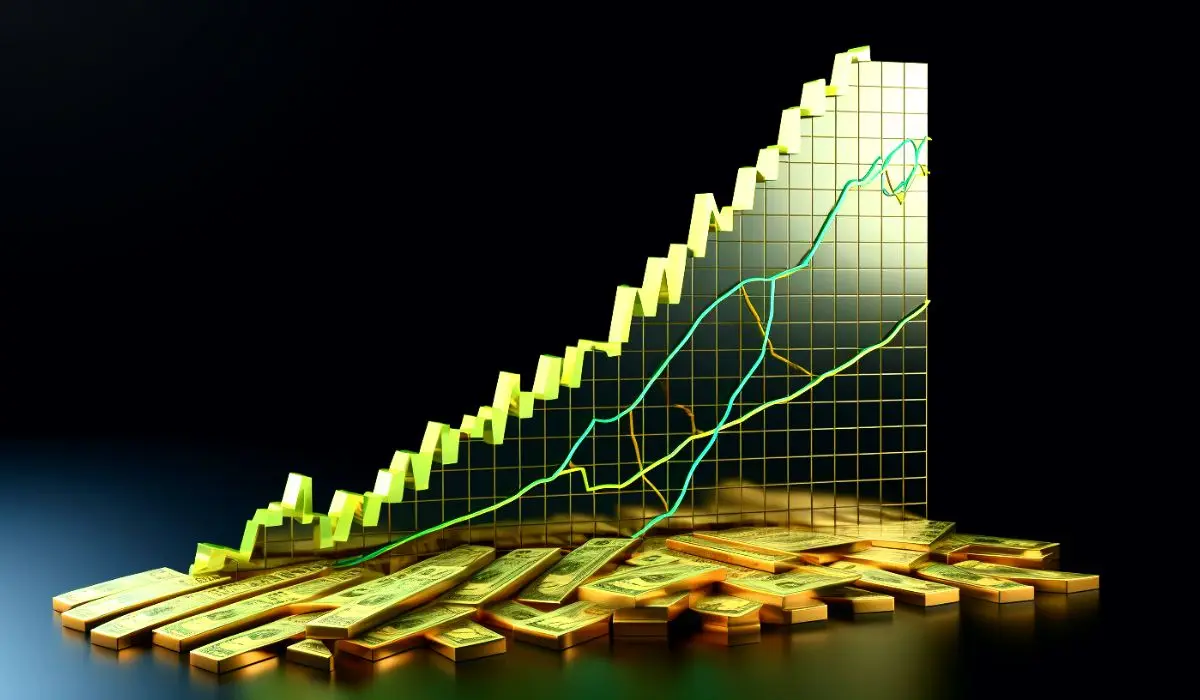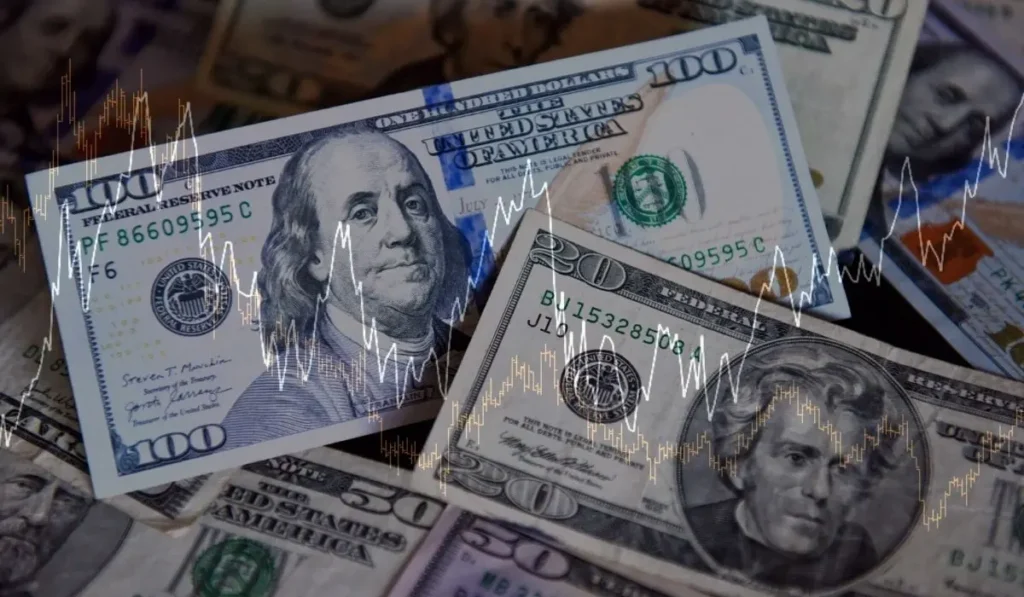The U.S. dollar rallied to a three-month high as traders expect the Federal Reserve to decide whether it will continue to go along with its higher-for-longer rate hike strategy or begin the cut downs to combat inflation. The dollar spot index climbed as much as 0.2 percentage points to its highest level since June.
Investors are now counting on Fed Chairman Jerome Powell’s speech at the Jackson Hole symposium for global central bankers on Friday where he will reveal the central bank’s plans to fight rising inflation in the U.S. economy.
The U.S. dollar index, which measures the value of the greenback against a basket of six foreign currencies – the euro, Swiss franc, Japanese yen, Canadian dollar, British pound, and Swedish krona, pushed as high as 104.20 in Asia and 103.80 in Europe, a level that was last observed three months ago. The index rose by 1.8% in August, bringing an end to the two-month losing streak for the dollar.
Markets Expect The Fed To Raise Borrowing Interest Rates One More Time Before The Year’s End
There were worries of an impending recession in the U.S. economy, which has been thwarted as economic data suggest the country is making steady but slow progress.

But since the consumer price index (CPI) – the measure of inflation – is still above the Federal Reserve’s 2% target, there are concerns among investors that the central bank may continue to raise interest rates on the dollar deep into the future.
Speaking to Reuters, Niels Christensen, chief analyst for Finnish banking giant Nordea said that “there is no reason” for the Fed to “close the door” on more rate hikes. Even though the U.S. economy is slowing down, it is still performing much better than Europe, which gives the dollar the upper hand, noted Christensen.
The Fed has been raising borrowing rates since March 2022 to bring inflation under control but investors are looking for a final word from the central bank on how long it will continue its rate hiking strategy.
In a CNBC news interview, the President of the Boston Federal Reserve Bank, Patrick Harker said that he doubts if the central bank will need to raise rates again. He also indicated that there was no ready answer to when the Fed will start to cut rates.
Economist and Boston Fed CEO Susan Collins said on Yahoo Finance that the interest rates may be nearing their peak, but additional increments are possible.
Markets predict that there is an 85% chance that the Fed will stay put at its upcoming Federal Open Markets Committee (FOMC) policy meeting next month. However, analysts suggest that there is a high chance for the U.S. central bank to hike its interest rate one more time before the end of the year.
Euro Declines As Business And Service Activity In Europe Continues To Slowdown
After an economic survey showed business activity in the German and European area in August to have been far below expectations, the euro dropped to its lowest level in two months against the dollar and a 12-month low against the British pound.
The Hamburg Commercial Bank’s (HCOB) flash Composite Purchasing Managers’ Index (PMI) for the Eurozone dropped to 47.0 points this month from July’s 48.6, its lowest since November 2020. PMI, which is compiled by S&P Global, is observed as the indicator for the overall economic health of the region.
Services PMI, the unit that separates economic growth from contraction, dropped down to 48.3 from 50.9. It was the first time the figure had fallen below the 50-point mark this year.
The German composite figure also fell to its lowest since March 2020 due to a concerning downturn in the country’s manufacturing output and a contraction in its services activity.
Euro’s weakening was triggered by the German economy’s bad performance, with the single currency hitting its lowest level against the dollar and sterling since June 15 at $1.081 and 84.93 pence, respectively.
Market experts expect the European Central Bank (ECB) to pause its tightening cycle in September on the back of the slowing economic environment in the Eurozone.
Yen On The Cusp Of A 9-month High As Japan Prepares To Intervene And Support The Currency From Weakening
In the Asian market, the Japanese yen rose by 0.3% to trade at 145.445 yen per dollar. The number has placed the currency close to its nine-month high of 146.565 which was achieved just last week.
Traders are now on the lookout for any signs of market intervention by the Japanese government, which occurred last year when the dollar broke above 145 yen.
This was done by Japan’s Ministry of Finance to support the yen while the currency weakened. The latest CPI data released on Friday showed that inflation in the domestic market remained well above the Bank of Japan’s (BoJ) target level. However, a lag in wage raises may influence the central bank to steer its policy.
In a note to investors, CBA strategist Joseph Capurso wrote that the market does not expect the BOJ to tighten monetary policy because the “spike” in inflation has not affected the acceleration in wage growth.
Strategists at BofA Global Research say that currency intervention by the Japanese government may not solve the yen’s weakness but could buy it more time to readjust.
According to financial researchers, the key difference is that last year, Japan did not have any control over the cause of the dollar-yen rally. But this time, the government can join hands with the BOJ and decide how much time to buy as the central bank is in control of the short-end yen yield curve.
Read More: Nvidia Stocks Surge To Record High As A.I. Tech Demand Grows
Yuan Continues To Drop As China Struggles To Recover From Post-pandemic Woes
Another major currency that has investors worried is the Chinese yuan, which is down over 5% against the dollar this year largely due to the country’s deepening economic crisis, which is putting more downward pressure on the government’s effort to revive the world’s second-largest economy from its post-pandemic woes.
On Wednesday, the yuan traded at 7.290 for every dollar, falling below its 9-month high of 7.349 yuan per dollar rate from Thursday. This comes after the People’s Bank of China (PBoC) directed domestic banks to scale back on their offshore investments, thus shrinking the overseas supply of the currency.
Crude Oil Prices Rise But A Weekly Decline Is Expected
Crude oil prices rose slightly on Friday with Brent crude up 0.4%, or 30 cents, to trade at $83.66 a barrel, while U.S. West Texas Intermediate crude was also up 0.4% at $79.36 per barrel. But the energy markets still remain on track for a weekly decline of between 1.5 and 2.5%.
Read More: Bitcoin ATM Network ByteFederal Officially Launches In Australia
